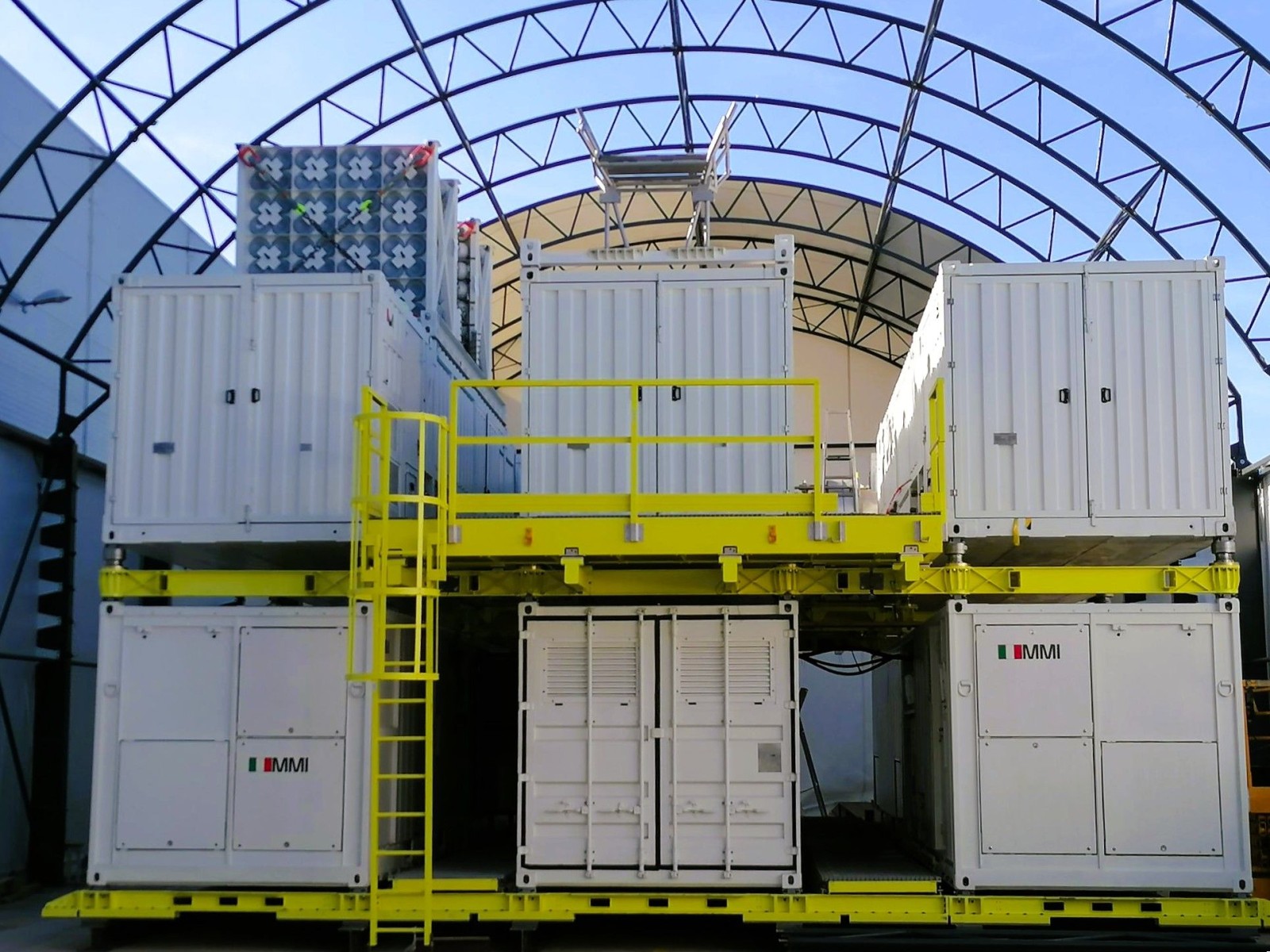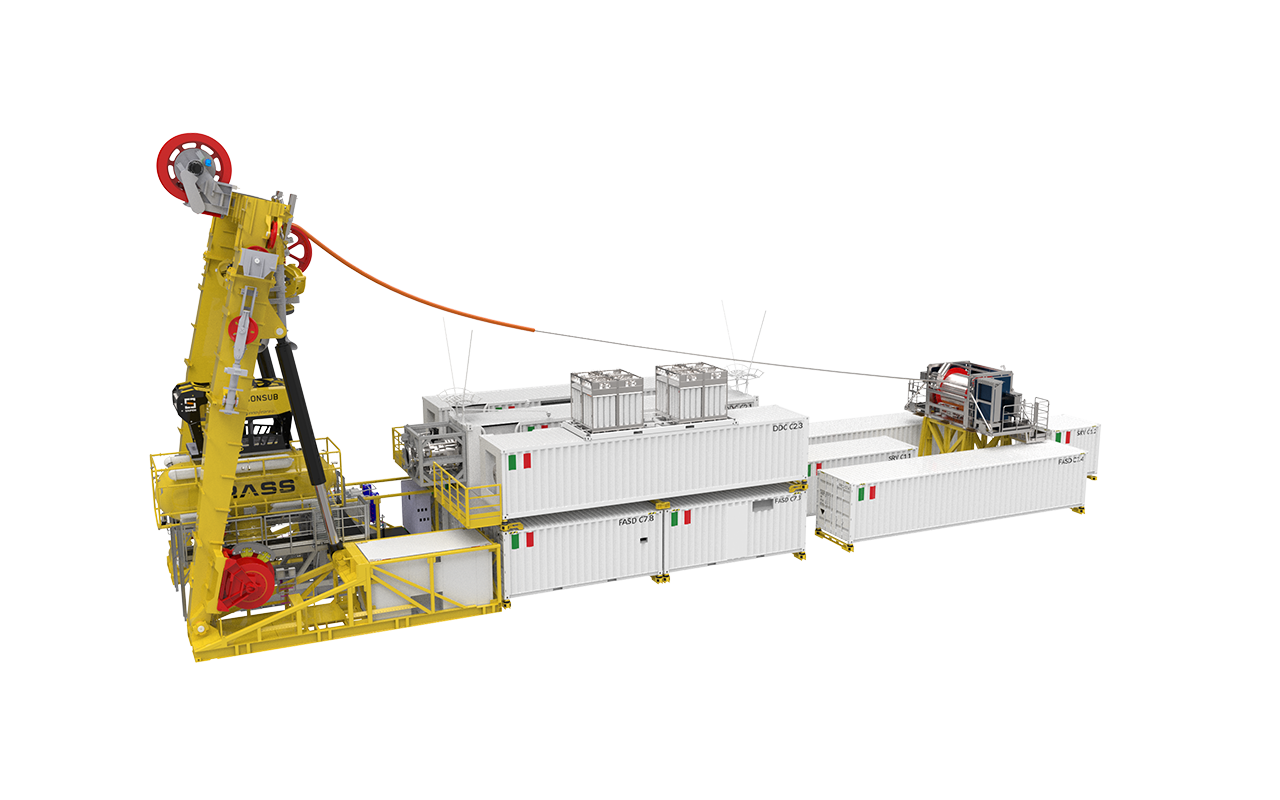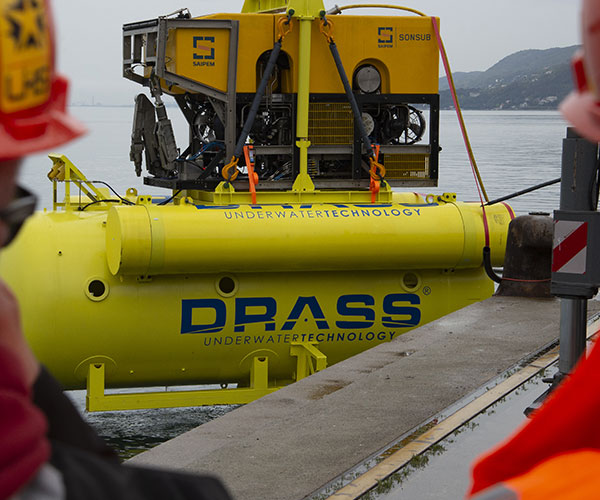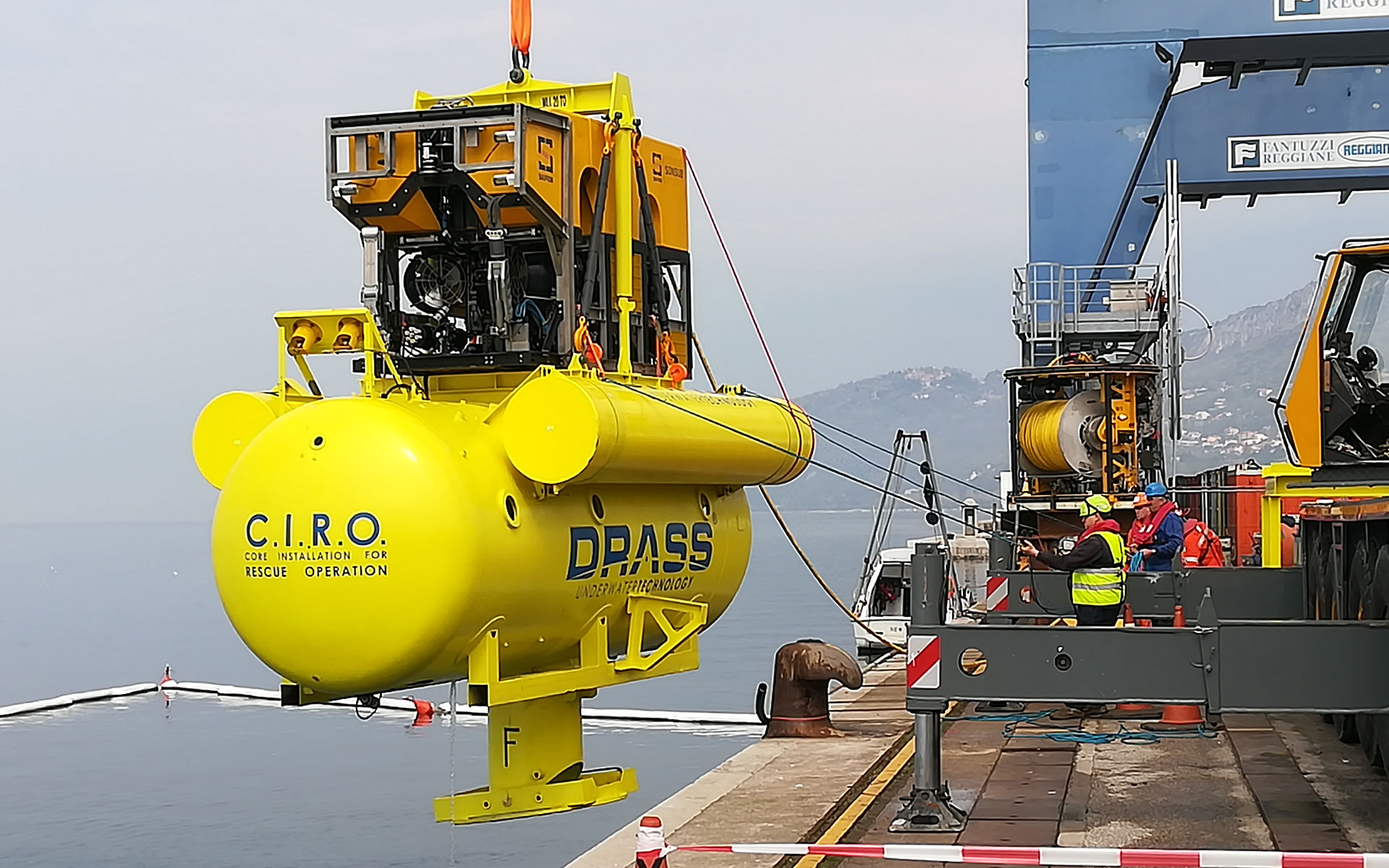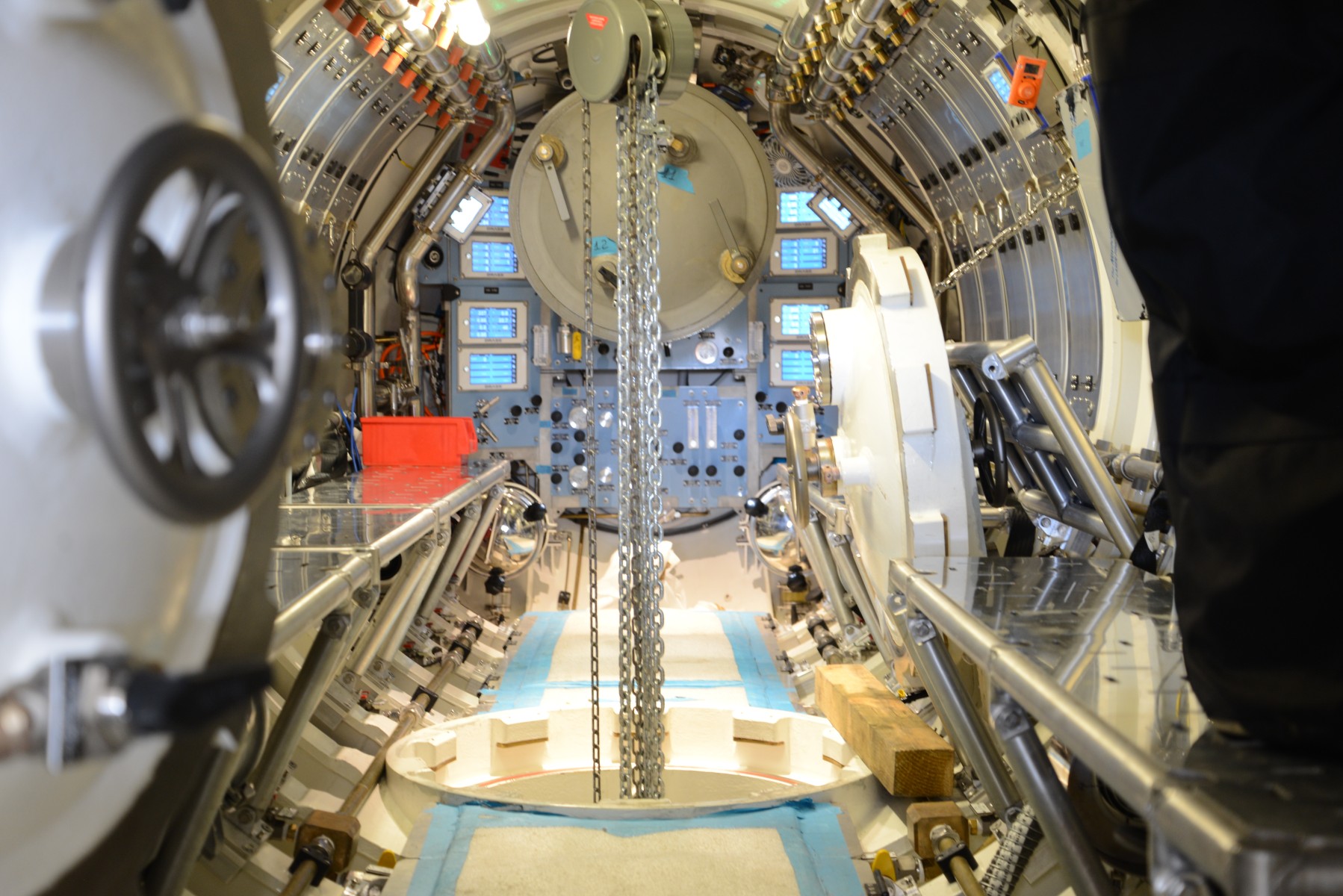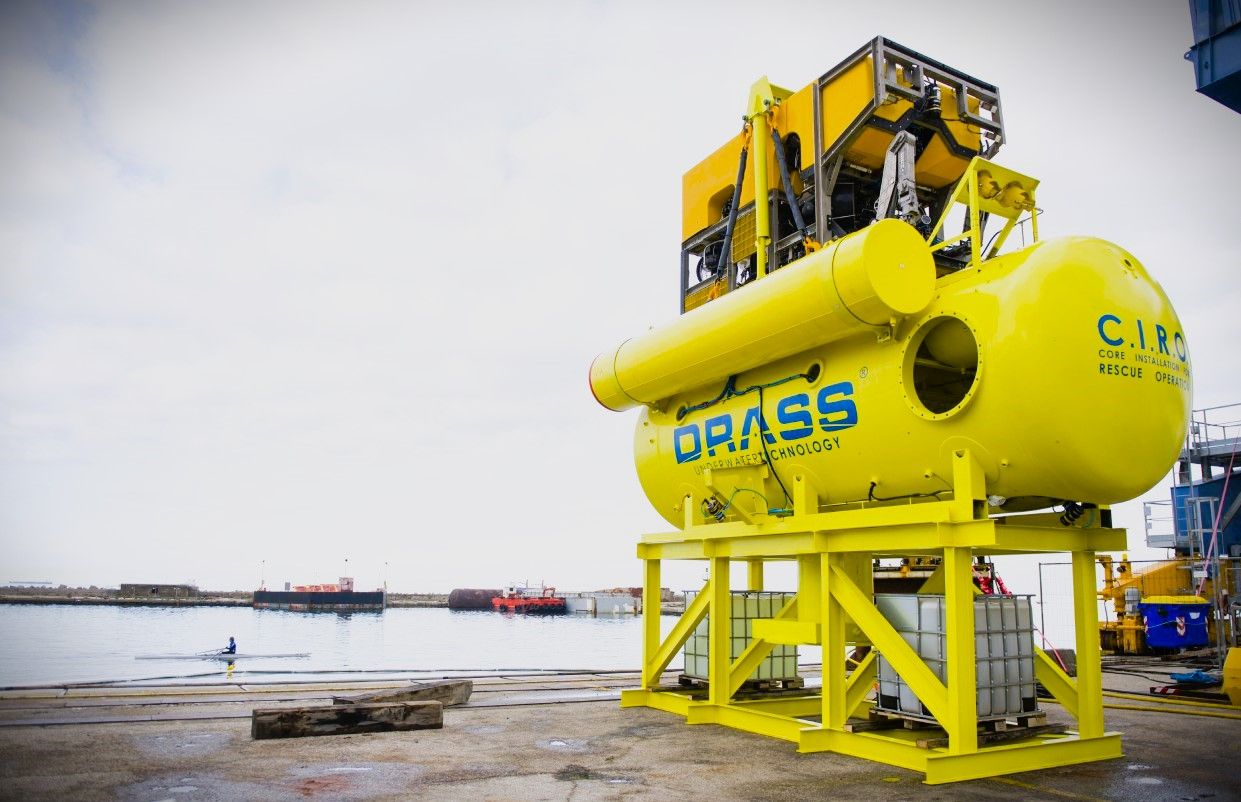SRV
Remotely operated tethered vehicle for rescuing the dissub crew
(SRV) SUBMARINE RESCUE VEHICLE
DRASS SRV is a modern, effective and reliable rescue vehicle, remotely operated and launched from the moon pool. DRASS SRV is capable of the most extended endurance in intense weather conditions – operating in very rough seas and connecting to the DISSUB even during extreme angle inclination.
The SRV moon pool launch offers the highest reliability and safety standards even in extreme sea conditions thanks to the rail guides and protection of a passive cursor. The cursor extends outside the ship keel, protecting the SRV from accidental bumping against the hull. The main wire pulls the SRV gently into the cursor which is conically shaped to connect with the entrance of the SRV frame.
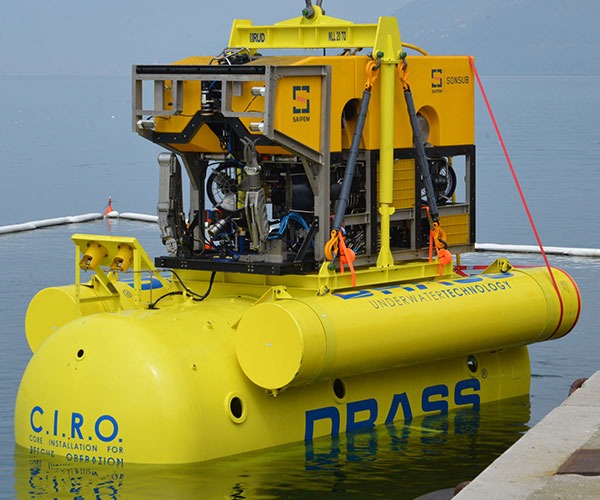
The design is a reliable, modular, expandable and patented solution. Based on the combination of a first-class industrial Working Remotely Operated Vehicle (WROV) and a technology proven Capsule for Intervention and Rescue Operation (CIRO); the WROV provides power and propulsion to CIRO and is docked onto it providing a simple but extremely reliable and cost-effective combination if compared with the existing RORV disassembles the ROV and reassembles it around the CIRO.
The CIRO is equipped with a variable inclination skirt to mate with the DISSUB (if pitched and/or rolled) preventing therefore loss of time in the setting of the skirt on surface and allowing adjustment once landed on the DISSUB ensuring the best mating position of the vehicle in order to reduce the interference between itself and the DISSUB. DRASS SRV presents the following advantages compared to the conventional solutions:
The use of a standard WROV, not integrated with the rescue capsule, allows a plug and play disconnection of the propulsion with immediate replacement in the event of a fault. ROV technology is reliable and commonly more than 400 Working ROVs operate worldwide (source IMCA) in Industry and Offshore Fields applications.
The overall structure of the vehicle is simplified and flexible. There is the possibility to use the WROV as a stand-alone unit for other purposes thanks to the dual use attitude of the System.
As the WROV is an industrial and civil technology, there is the possibility to train the Final User personnel on industrial simulators and on Industrial and Offshore applications without the need to operate in real Submarine Rescue scenarios, thereby keeping the WROV pilots trained and updated at all times, with unlimited possibility for personal growth and reduced associated costs.
The use of the umbilical cable gives virtually unlimited mission duration; the mission will never end due to limits of the battery. The use of umbilical allows to have at disposal quantity of power that allow to use more powerful thrusters to effectively contrast subsea current conditions.
The possibility to connect many different payloads to the docking plate of the WROV makes the SRV a dual-use system, allowing alternative payloads not only on Defence applications but also Industrial and Offshore ones with major benefits for the Final User’s Country, Armed Force and Pilots.
| Max rescue depth | 600 msw |
| CIRO max internal pressure | up to 6 ATA |
| Max current | 3 knots |
| Life Support System | >24 hrs |
| DISSUB Mating Angle | 40 deg (pitch & roll) |
| Rescuee Capacity | 20 survivors |
| Weight in water | 0 kg |
